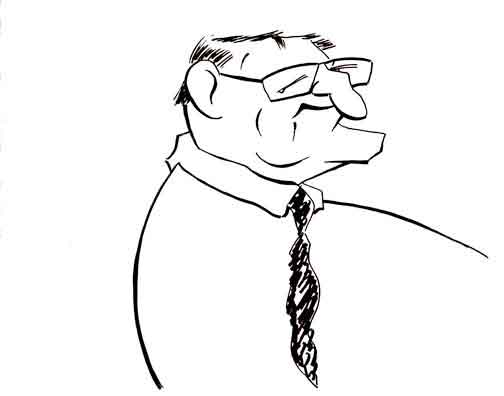Michael James Steuart Dewar

Despite the misconception held by some chemists (which include not only undergraduates but some professors) Michael James Steuart Dewar, although one of the most prominent and prolific chemists of the twentieth century, neither synthesized nor named Dewar's benzene.
That latter honor went to Sir James Dewar, who was a Scottish chemist of the nineteenth century. It was Sir James who proposed his famous structure as an example of what benzene was not. It wasn't until the 1960's that the compound - or rather bicyclo[2.2.0]hexa-2,5-diene - was actually synthesized.
Michael, though, was also from the UK. Starting out as a classical experimental organic chemist studying (or "reading" as the British prefer) at Oxford, Michael began moving toward theory at a fairly early stage. Because the computers in Michael's most active years - the early 1950's to the late 1980's - were slow and clunky, he became a strong advocate of semi-empirical approach to quantum calculations. This was a computational method where - as one theoretician once put it - you ignore all calculations that are too difficult or too long for the computer to calculate and find the others from experiment. Over the years Michael published hundreds of papers about his calculations.
It's honest to say that the hard-nosed theoreticians - advocates of ab initio or first principle calculations - tend to look down on semi-empirical calculations, and they delighted in pointing out molecules where Michael's numbers were off. Naturally Michael would respond in kind - complexity doesn't necessarily mean accuracy - and as he was never a reticent man, there were some intellectual set-to's.
Today the consensus amongst the theoreticians is that use of ab initio methods has ultimately triumphed over semi-empirical, the latter being used as a last resort when you've got too many atoms to get the correct answer. But it is also true that among the most widely used computational programs are those developed by Michael and his students and colleagues. We also must acknowledge that the lines of computational methods are often blurred. What is probably the most popular quantum method amongst chemists today is often thought of as ab initio, but it can't get it's impressive accuracy without incorporating semi-empirical features.
Although Michael achieved his greatest fame with his high level calculations, in the early 1950's he was able to show that you could indeed use quantum theory without computers and as a simple and practical alternative to the qualitative (ptui) "electron-pushing" that even today predominates in much chemical discussion. Of which one applications you can read - and a bit more about Michael - if you just click here.